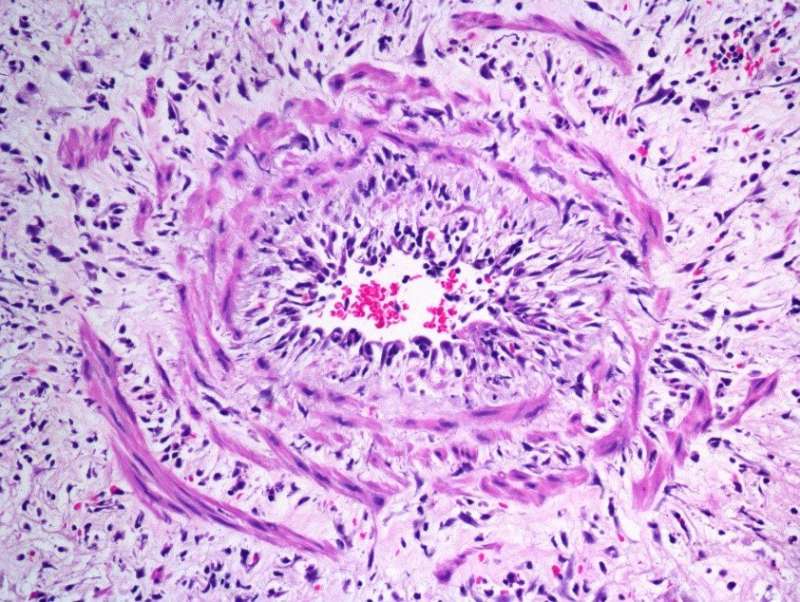Researchers characterize unusual blood clots in leprosy patients

For years, doctors have observed that some patients with leprosy develop unusual blood clots which can lead to stroke or heart attack. Now, researchers reporting in PLOS Neglected Tropical Diseases have for the first time characterized these blood clots, leading to a new understanding of how leprosy affects the circulatory system and potential new screening tests to predict leprosy reactions.
Leprosy is a chronic infection by Mycobacterium leprae and causes body-wide symptoms, deformities, and disability. It remains a public health problem worldwide, despite the existence of antibiotic combinations that can cure it. While many symptoms are due to the bacteria's infection of immune and nervous system cells, reactional episodes of leprosy also include symptoms and disorders more closely linked to hemostasis, or blood clotting.
Flavio Alves Lara of the Oswaldo Cruz Institute, and colleagues searched for blood clotting abnormalities among 638 leprosy patients and identified 35 patients who had unusual fatty clots, which the researchers dubbed "leprosum clots." The team went on to study what factors predicted the development of leprosum clots and what molecules were present in the clots.
The researchers found that patients both experiencing a reactional episode and those with non-reactional leprosy had factors in their blood—including plasmatic fibrinogen, anti-cardiolipin antibodies, von Willebrand factor, and soluble tissue factor— promoting blood coagulation. Formation of leprosum clots, they showed, was correlated with increased levels of soluble tissue factor and von Willebrand factor. Tests on leprosum clots revealed high contents of lipids and fibrinogen, and showed higher levels of two proteins—complement component 3 and 4 and inter-alpha- trypsin inhibitor family heavy chain-related protein (IHRP)—compared to clots from patients without leprosy.
"We propose that some of these components, fibrinogen for example, presents potential as predictive biomarkers of leprosy reactions, generating tools for earlier diagnosis and treatment of these events," the researchers say.
More information: Silva DSd, Teixeira LAC, Beghini DG, Ferreira ATdS, Pinho MdBM, Rosa PS, et al. (2018) Blood coagulation abnormalities in multibacillary leprosy patients. PLoS Negl Trop Dis 12(3): e0006214. doi.org/10.1371/journal.pntd.0006214


















